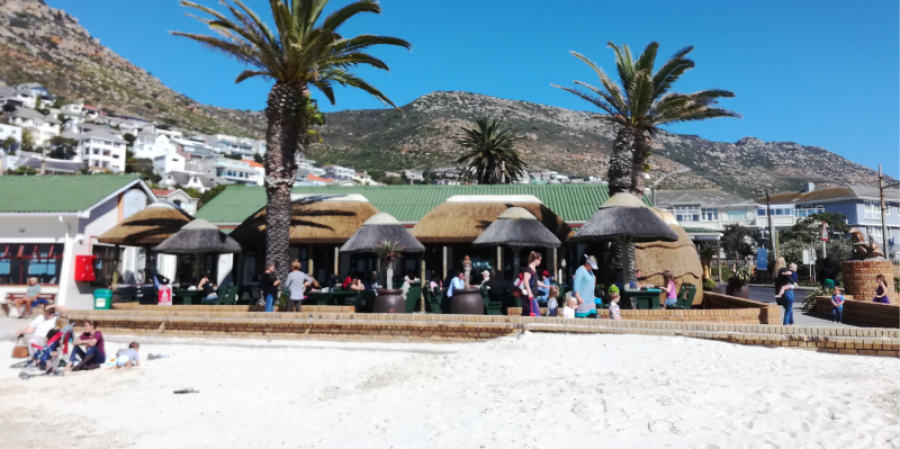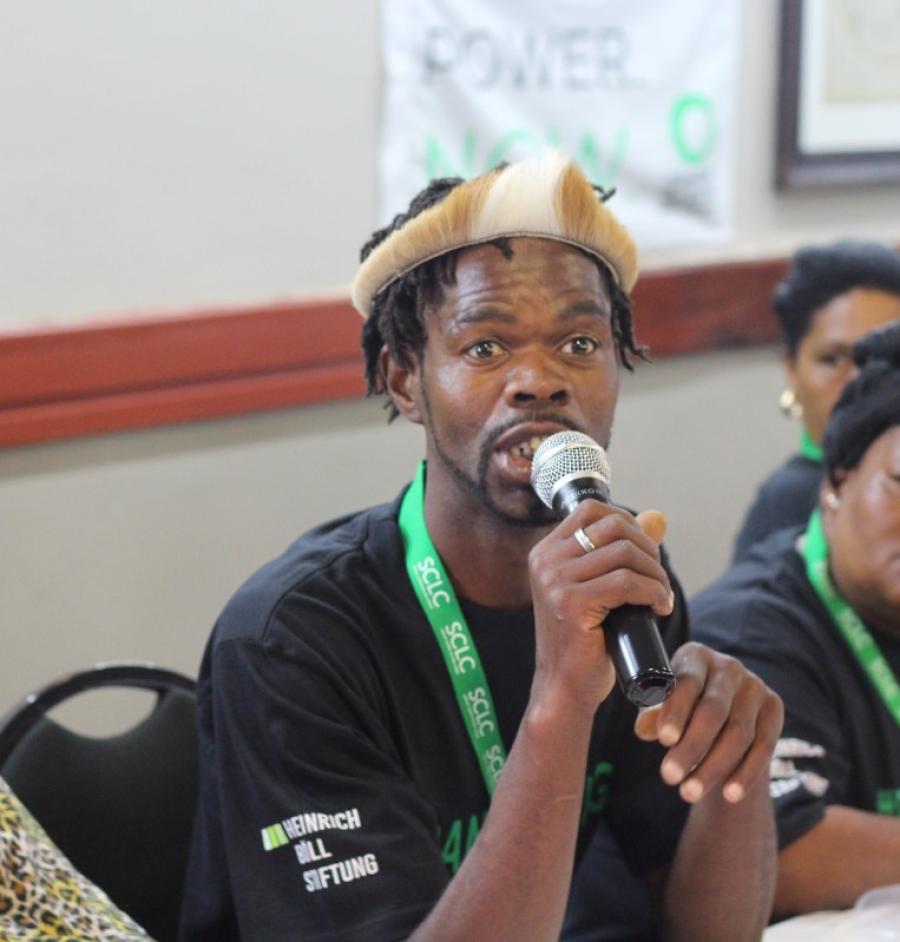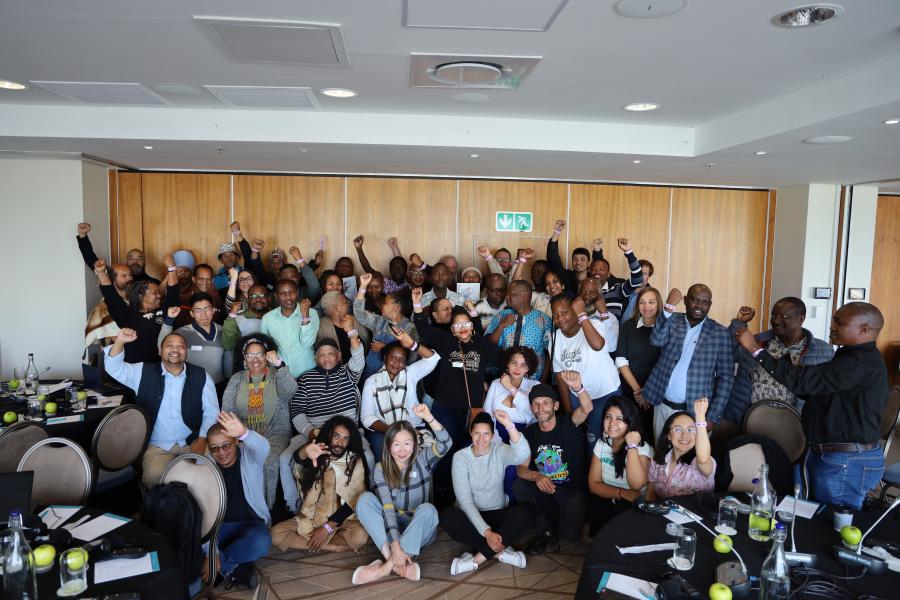Considerable attention has been focused on the massive relocation of black people in South Africa, engineered and executed by the Nationalist government in the name of apartheid and "separate development." The Surplus People's Project (SPP 1983) reported that some 3.5 million people had been "uprooted and relocated" 'since the 1960s as a direct result of prevailing apartheid policies. Such relocation continues despite national and international protests and despite undertakings to the contrary.
"Betterment Planning" Defined
The figure of 3.5 million does not include people relocated in the course of the implementation of "betterment planning." Although recognized as one type of removal by the Surplus People's Project, little has been written about this form of relocation, which predates Nationalist Party rule and the apartheid system. As the SPP acknowledges, this form of removal has affected millions of black South Africans; it has not, however, involved relocation from one general area to another, but relocation within the areas set aside for black people (the reserves or "homelands"). These "betterment" schemes, widely implemented in South Africa (and also in countries such as Malawi and Zimbabwe) since the 1930s, are still being implemented in areas such as the nominally "independent" Transkei. This type of relocation takes place not in the name of apartheid, but in the name of conservation and agricultural development.
Also known as "soil conservation," "agricultural rehabilitation" and "betterment planning," these schemes involve the following steps: (1) dividing a given area (usually a rural ward or administrative area) into residential, arable and grazing land; (2) relocating people from their dispersed homestead sites to sites in new, village-type residential areas; and (3) demarcating and fencing arable lands and establishing fenced grazing camps.
"Betterment" plans might also provide water supplies, agricultural extension services, livestock improvement (including culling), soil erosion works and so on. Generally speaking, the older plans, which sometimes provided for such projects as small irrigation and dairying schemes, were more elaborate than newer ones. In many cases, however, such schemes existed on paper only, never to be implemented due to shortages of funds and labor.
Various explanations exist for the institution of "betterment" schemes in South Africa. Initially, it seems, the schemes were motivated by a concern for the conservation of natural resources and lack of rural development. Later, however, they came to be used to ensure a steady supply of migrant labor to "white" South Africa, and then, due to economic and political developments (including the large-scale relocation of blacks from farms and "white spots" into the "homelands"), as a means to control the rural population.
Rural black people protested against these schemes almost from their inception. This resistance sometimes took violent forms, including the cutting of fences, the killing of headmen and chiefs who had helped to force the schemes on their people, assaults on government officials and the destruction of government property.
The reasons for this resistance can be examined more closely by analyzing a "betterment" scheme initiated in 1979 in the Shixini administrative area of Willowvale District, Transkei. At present (July 1988) the scheme has been suspended,(1) but a certain amount of relocation has already taken place. An accurate assessment of the scheme's effects can be made by examining the effects of this relocation, the planning process and the plan itself, and by referring to other detailed studies of the results of "betterment".
Structure of Shixini Society
Shixini people, like many of the people in the coastal part of Transkei, are traditionalists in many senses. For want of a better term, they are what Mayer (1961) called "Red" Xhosa: illiterate people who value tradition, tend to spurn urban values and practices, continue to practice the ancestor cult and attempt to minimize their involvement in the wider South African political economy and to protect themselves from white dominance and the effects of apartheid. The "Red" ideology, an ideology of resistance that uses the concept of tradition as a shelter for people to protect them from the unattractive world outside their rural enclave, is one of the main strategies through which they achieve these goals. The irony is that this philosophy conveniently suits the proponents of apartheid, many of whose laws and practices have been seen as an attempt to maintain the (real and imagined) differences between white and black and to justify discrimination on the basis of cultural affiliation.
To understand the effects of betterment on the people of Shixini, and their resistance to it, we must, therefore, ask how it has been possible to maintain a sense of tradition, and to use the values and practices of what is seen as tradition, to resist fuller incorporation.
Shixini has two major and interrelated principles of social organization, both of which are seen by the people as "traditional" and which impinge on almost every aspect of daily life. These are kinship and territory, which between them provide the moral and political framework through which Shixini people regulate their lives and maintain a degree of independence from the outside world.
As a ward or administrative area, Shixini is divided into 10 subwards, each under a subheadman who answers to the ward headman, who is also a chief. Each of these subwards is, in turn, divided into sections, each with a particular historical identity and sense of unity. Not formally recognized as part of the administrative system, these sections nevertheless play a very important role in this society. The sections (some of which are divided into further subsections) are largely territorial groups, consisting of from 10 to 30 homesteads each. Most of the homesteads are found in proximity to each other in the same general area of the subward.(2) Shixini people follow the typical Nguni patrilineal pattern of kinship; groups of agnatically related homesteads often live close to each other within a subward section. However, a section usually contains representatives of more than one homestead group, even though it may be dominated by only one of these.
These organizational principles figure strongly in land allocation; in the pre-betterment scheme, control over land effectively rests with territorial and kinship groups. Rights to land and resources form part of a social procedure and are granted or refused on the basis of social criteria. An applicant for a residential site, for example, initially and informally makes the proposal to the people living in the immediate proximity of the site - a group of neighbors living in the same subward section, which usually includes close agnatic kin (e.g., a father, father's brother or brother). If the group agrees to grant it, the applicant then approaches the subward head, who convenes a meeting of the whole subward to ratify the agreement. The application then goes to the headman for formal approval.
The allocation of fields follows a slightly different tack, because fields are regarded as heritable property. If a field becomes available, members of the agnatic group who live in the same subward are given first option. For new fields to be established, a subward section applies to the chief; if he grants their application, the fields established there tend to be allocated to members of that section, and only after to other members of the subward.
Grazing is controlled by subward sections, each of which has ties with a number of nearby grazing areas. The members of a section cannot refuse grazing rights to other sections unless they decide that a particular area is becoming overgrazed, in which case they may apply to the subward as a whole to close off such areas until the grass has recovered.(3)
Resource Use in Shixini
As preceding examples show, people such as those in Shixini have a considerable degree of control over their resources. They attempt to manage these to the best of their ability, maintaining sensitivity to ecological and demographic factors. Such control has enabled them to adapt over the years to such problems as overpopulation, land shortage and declining soil fertility.
Probably the best example of this resource control lies in the substitution of garden land for fields. In Shixini, fields are situated in low-lying areas near rivers and streams, usually some 2-4 km from homesteads. They become less important to people as they become older and their yields decline. Lacking means to maintain field fertility and the area necessary to establish new fields on a large scale, people have responded by developing the gardens that adjoin their homesteads instead. For one, they can extend gardens fairly easily; fields, on the other hand, are fixed in size and extent. As long as neighbors agree, a homestead can enlarge its garden or change its location. Furthermore, people can easily fertilize gardens with manure from the adjoining livestock byres and can include an old byre or homestead site in the garden when it is extended. They can grow a wider variety of crops in gardens, too, since they live nearby and can easily chase off errant pigs and other livestock or fence their gardens. Gardens have become an important part of peoples' subsistence requirements, and some are as large as three or four hectares.
Like land allocation in Shixini, the production process is a social one in which the organizational principles of kinship and neighborhood feature prominently. Every homestead is embedded in a complex network of economic relationships that make production possible. The most prominent aspect of this interdependence is seen in work parties, which perform a wide variety of tasks and take many forms. Almost every homestead belongs to a plowing "company," which combines labor, oxen and tools to plow and plant fields and gardens in rotation. Tasks such as weeding, harvesting, cutting grass and fencing are almost invariably performed by a group of coworkers who come together in response to an appeal by the homestead. These networks of reciprocity and obligation are almost always confined within the subward.
What all this means is that Red people are able to maintain a degree of independence in spite of a political economy that discriminates forcefully against black people and despite a heavy dependence on migrant labor earnings. Shixini people are able to rationalize migrant labor in terms of the role it plays in maintaining their rural economy and lifestyle. This aspect of their lives, too, is ritualized: migrant workers follow a series of rituals before and after going to work that attempt to ensure that they will interpret their work experience "correctly"-that is, as a means of serving their rural home. The Red ideology, then, is not some outmoded clinging to a past but an important adaptive mechanism, an attempt to cope with a precarious economic and political situation. As such it has been fairly successful. "Betterment," however, undermines the system.
Effects of "Betterment" Schemes
The effects of "betterment" schemes - the spatial reorganization that they bring and the relocation of people into village-type settlements - are fairly dramatic. Because the schemes force people from different subwards and sections to settle together in new areas, existing subward divisions fall away. Section and subward identities, too, become irrelevant, as neighborhood groups break up and scatter and organizational structures fall apart.
Attempts to maintain section and subward identity in the new areas (usually at the symbolic level) lead to conflict as smaller groups are scattered and absorbed by larger ones. People find themselves living next to relative strangers, and suspicion and hostility between neighbors replaces the old networks of friendship and economic cooperation. As maintaining the networks through which labor recruitment took place becomes more difficult, people tend to fall back on kinship links. These results, commonly reported in the literature, are currently in evidence in those parts of Shixini in which residential relocation has taken place.
Shixini people do not want to leave their old areas and homestead sites, thus losing control over the allocation and management of their land and other resources. They realize that "betterment" means having to live next door to strangers (logistically, it is impossible for people to move in groups and to recreate old neighborhoods in the new areas) and losing independence as the authorities enforce tax payments and other levies and make school attendance by children compulsory.
They are also well aware of the economic effects of "betterment": the expense of having to build a new homestead and the loss of their large and productive gardens. Although the rates laid down in Transkei legislation promise hut compensation, the Transkei government is on the verge of bankruptcy and those who have moved (some as early as 1981) have received no compensation. Gardens in the new residential sites are very small: the sites measure 46 square meters, on which the huts, byres, chicken coops and so on must be established; whatever remains is used for a garden. Theoretically this may be compensated for by the acquisition of a new field, but the difficulty here is that the fields will be even farther away than the old ones, and some of the areas set aside are totally unsuitable for cultivation. At the same time, the plan calls for some relatively new and productive fields to be excised. The net result of these factors will be loss of agricultural production, greater poverty and greater reliance on migrant labor earnings.
As indicated above, the plan developed for Shixini suffers from several fundamental flaws. First, the chief instituted it without properly consulting the people. Second, its details were determined by a government planning officer, working according to parameters laid down by the Department of Agriculture and Forestry - not in terms of either the needs and desires of the people or the characteristics and potentials of the area. The planning officer spent a grossly inadequate period in the area - two days - a mistake that is reflected in the plan's deficiencies. Finally, the plan was implemented without following the provisions of the relevant legislation (e.g., without ministerial approval), which makes it, strictly speaking, illegal. What seems to have happened in the Transkei is that "betterment" planning has taken on a rationale of its own; it is carried out for its own sake in a bureaucratic and inflexible way.
As far as the ecology is concerned, concentrated settlement is likely to lead to increased erosion around the villages, as has occurred in other "betterment" areas. Factors such as the destruction of the traditional management system and the unlikelihood of abandoned fields reverting to grazing (they tend to be full of unpalatable shrubs and/or coarse thatching grass) will probably lead to overgrazing. Water resources near the large villages could become polluted and nearby wooded areas overexploited. The scattered settlement system, on the other hand, allows for more controlled and easy access to water and wood, as well as to land. The plan itself makes no provision for agricultural extension services, for combating erosion or for environmental conservation. Grazing camps detailed on it are not going to be implemented due to lack of money for fencing; the estimated amount for establishing boreholes and reservoirs in the villages, too, is likely to never materialize.
Clearly, "betterment" seriously disrupts the social structure, economy and ability of Red Xhosa to maintain their particular response to apartheid. This is aggravated by the fact that seniors lose the little control they have over juniors, since they have lost control over land. The breakdown of the existing territorial units hastens the demise of the youth movements, which are territorially based and which functioned as socializing agents - the "schools" of Red people. Thus, wherever "betterment" has been imposed in the Ciskei and Transkei, the Red lifestyle and its associated values have disappeared. It would be naive to claim that "betterment" is the only force breaking down Red resistance in the Transkei, but it certainly is the major one.
Notes
(1). An alternative to the scheme is currently being researched and planned, and may be instituted in Shixini in place of "betterment.'
(2). Sections are not always entirely geographically discrete, and may sometimes include a member who lives in an area not associated with the section.
(3). Control over grazing by sections ceased to be practiced almost immediately after the "betterment" scheme was imposed.
(4). Other factors making the Red option less viable are detailed in McAllister (1988).
Article copyright Cultural Survival, Inc.



